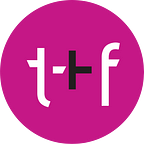The NCredible Framework Quadrant Descriptions: Discovery
Before reading this article, learn about The NCredible Framework.
Discovery learning reveals new topics and descriptions.
Learning Objectives in the discovery quadrant aim to bring clarity and scrutiny to abstract paradigms. As a reminder, a Learning Objective is an aligned and affinitized set of questions with similar scope. These Learning Objectives encourage teams to revisit and describe the things they take for granted, like mundane concepts, legacy assumptions, and futures. The revealed topics and descriptions present themselves as opportunity spaces for the organization to consider, or provocative realities that warrant further exploration. Questions in this quadrant are typically context-aware, and not context-constrained. They also tend to be “existential,” asking the organization to dig deeper into long-held assumptions about what it is and what it offers. Essentially they deal with a topic that can exist in many realities, rather than a single one.
Example question
What creates “trust” in smart home products?
The team wants to learn about and align on what the subjective term “trust” means. Because smart home products have been on the market for a while, the term has evolved, and also laden with experiential assumptions. People may be more scrutinizing. Others may have developed workarounds to mitigate smart home trust concerns. The organization simply understands that their assumptions about trust in smart home products may not be up-to-date, and that they need to discover the new consumer relationship with these offerings.
Study Design Considerations
- Engage “extreme” populations that may not fit within the typical representative consumer (e.g., rejectors/hackers, of smart home products)
- Consider looking into adjacent categories and analogous spaces, rather than the subject category (e.g., a smart home product company looks into the concept of “trust” in healthcare)
- Abandon organizational baggage and constraints (e.g., the entire smart home company does not align on the word “trust” as an issue, therefore it must be discussed)
Case Study
Background
LPK is a leading, global branding agency. They have a strong history of working closely with clients to provide elevated consulting services, and are often working with leaders in innovation. LPK wondered what kinds of services and experiences they could provide to their clients that could extend the LPK offering beyond bespoke consulting. They had some theories about what could meaningful offerings, with not only consulting, but digital services as well.
We kicked off the project with a knowledge assessment followed by an NCredible Framework workshop. During the knowledge assessment, we asked team members to indicate everything they believe they know about their target population — innovation leaders. They examined their beliefs about innovators’ behaviors, aptitudes, attitudes and emotions along a confidence spectrum (high or low confidence in that belief, where “medium” confidence was considered low). We used this as a reflection tool to truly understand the team’s sources of knowledge, and if and how they achieve consensus in this knowledge.
Ultimately, the team determined that their understanding of innovators could use a refresh and that perhaps innovation practices have evolved beyond aligned understanding among the team. They also realized that many of the most impactful and long-held narratives about innovators tended to come from one team member (who happens to be a brilliant storyteller). Additionally, the information about innovators in which they felt strong confidence tended to be general knowledge about workplace dynamics for creatives — nothing truly unique to innovators.
The team knew that in order to create meaningful services for innovators, they would have to refresh their understanding of who they are, what they do, what they value, and what services they appreciate.
Learning Objective
To understand and describe the work of innovators and the experience attributes of tools and solutions with which they engage.
Sample
We sought leaders in innovation in large organizations. These leaders might be defined by role, or unofficial leaders that everyone looks to when discussing the topic of innovation. We found participants through our personal networks (and LPK’s) to achieve a sample 10. We spoke with Directors of Innovation, Chief Strategy Officers, Heads of Experience, etc. in domains such as banking, media, healthcare, athletic apparel and education.
Methods
Due to budget realities, we conducted Remote Interviews with an open-ended homework assignment. In the homework assignment, participants had to sketch out their innovation process and influencers. Some drew diagrams, others drew tables, while others used symbols to indicate their workflows. During the Remote Interviews, participants shared their innovation processes, tasks, bottlenecks and catalysts. They also reacted to several digital prototypes prepared by LPK.
Outcomes
We learned that universally, innovators have tool fatigue. The latest and greatest offering to help them make their work easier does not always resonate. Contextual use of a tool (often tied to a specific program) are often analog (i.e., personal notebooks) and coupled with other tools. Persistent tools, those that transcend a particular program, tended to have more promise, but the market is saturated with these kinds of offerings (i.e., team collaboration tools like Slack and project transparency tools like Asana). Transcending a particular program didn’t mean that the tools integrated well.
While the LPK team found our insights about innovator tools useful and meaningful, they felt strongly about our description of the tension in the work of the innovator. Markedly, innovators have the permission to be blue sky and visionary, but when embedded in a workplace environment they are mired by the incidental work of project management. This tension leaves innovators feeling like they have to contribute something groundbreaking and disruptive while at the same time playing by the rules.
Exploring this tension led LPK to consider other approaches — beyond digital services — to meet the needs of innovators. In the end, research findings further supported LPK to pursue innovator programs that fostered connection and capitalized on their own strengths. LPK created the foundations for LPK Innovation Supper Club, the Roadblock to Innovation card deck, Digital Roundtables, and LPK Beta.
Read about the other quadrants — Exploratory, Definition, Validation.
